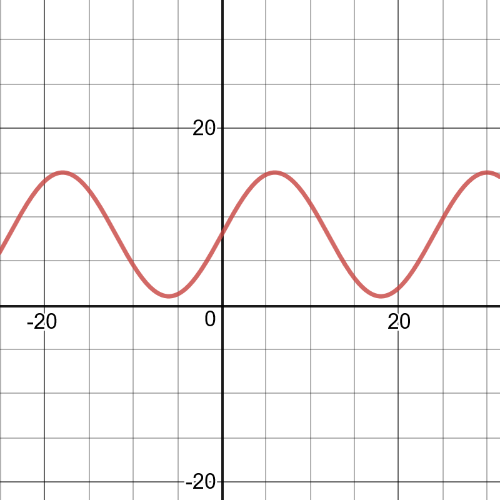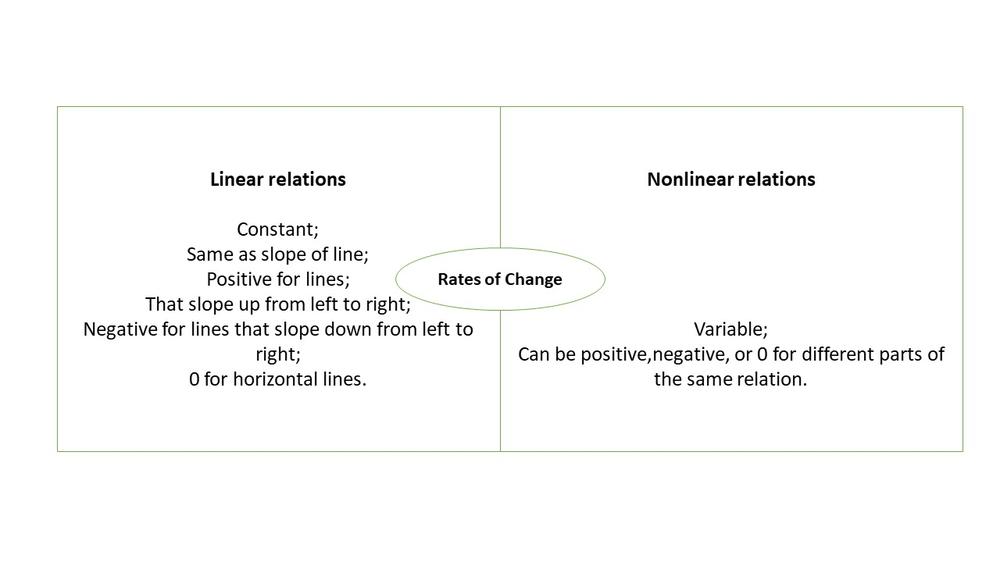
All Solutions
Page 66: Getting Started
$dfrac{y_2-y_1}{x_2-x_1}$
According to this, the solutions of our task are:
#### (a)
$textbf{The slope}$ through those two points, $A=left(2,3 right)=left(x_1.y_1 right)$ and $B=left(5,7 right)=left(x_2,y_2 right)$ is:
$dfrac{y_2-y_1}{x_2-x_1}=dfrac{7-3}{5-2}=dfrac{4}{3}$
#### (b)
$textbf{The slope}$ through those two points, $C=left(3,-1 right)=left(x_1.y_1 right)$ and $D=left(-4,5 right)=left(x_2,y_2 right)$ is:
$dfrac{y_2-y_1}{x_2-x_1}=dfrac{5+1}{-4-3}=dfrac{6}{-7}=-dfrac{6}{7}$
#### (a)
For example, we can pick points $left(1,1 right)=left(x_1,y_1 right)$ and $left(3,-5 right)=left(x_2,y_2 right)$ and of those function $textbf{we can form function}$ on the following way:
$y-y_1=dfrac{y_2-y_1}{x_2-x_1}left(x-x_1 right)$
$y-1=dfrac{-5-1}{3-1}left(x-1 right)$
$y=-dfrac{6}{2}left(x-1 right)+1$
$y=-3left(x-1 right)+1=-3x+3+1=-3x+4$
#### (b)
For example, we can pick points $left(1,0 right)=left(x_1,y_1 right)$ and $left(4,51 right)=left(x_2,y_2 right)$ and of those function $textbf{we can form function}$ on the following way:
$y-y_1=dfrac{y_2-y_1}{x_2-x_1}left(x-x_1 right)$
$y-0=dfrac{51-0}{4-1}left(x-1 right)$
$y=dfrac{50}{3}left(x-1 right)$
$0=2x^2-x-6$
$0=(2x+3)(x-2)$
$0=2x+3$ and $0=x-2$
$0-3=2x+3-3$
$-3=2x$
$-dfrac{3}{2}=x$
$0+2=x-2+2$
$2=x$
$$
textbf{The zeros are $-dfrac{3}{2}$ and $2$.}
$$
#### (b)
$0=2^x-1$
$0+1=2^x-1+1$
$1=2^x$
$textbf{Any non-zero number raised to the exponent of $0$ is $1$,so $x=0$}$.
$0=sin(x-45^0), 0^0 leq x leq 360^0$
$sin(0^0), sin(180^0)$, and $sin(360^0)=0.$
$0^0=x-45^0, 180^0=x-45^0$, and $360^0=x-45^0$
$0^0+45^0=x-45^0+45^0$
$45^0=x$
$180^0+45^0=x-45^0+45^0$
$225^0=x$
$360^0+45^0=x-45^0+45^0$
$405^0=x$
$textbf{Because $0^0 leq x leq 360^0$,$ 405^0$ cannot be a zero.The zeros are $45^0$ and $225^0$}$
#### (d)
$0=2cos(x)$
$0=cos(x)$
For $-360^0 leq x leq 0^0, cos(-90^0)=0$ and $cos(-270^0)=0$
$textbf{The zeros are $-90^0$ and $-270^0$}$.
Here we have $textbf{vertically stretch}$ by a factor of $dfrac{1}{2}$.
#### (b)
Here we have $textbf{vertically stretch}$ by a factor of $2$ and $textbf{translation}$ $4$ units right.
#### (c)
Here we have $textbf{vertically stretch}$ by a factor of $-3$ and $textbf{translation}$ $7$ units up.
#### d)
Here we have $textbf{vertically stretch}$ by a factor of $5$ and $textbf{translation}$ $3$ units right and $2$ units down.
subsection*{(a)}
The equation for the amount of money after$t$years is:\$B_t=B_0(1+r)^t$\
subsection*{(b)}
After$3$years, we will have:\$B_3=B_0(1+r)^3=1000(1+0.08)^3=1000cdot1.26=1259.712
$$
subsection*{(c)}
The amount of money doesn’t increase constantly because we calculate $8%$ of money per year on different amounts each year. That amount is bigger and bigger every year,but not for the same amount of money.
$$
We can see from the following graph of this function which is the maximum and minimum height, and $textbf{the minimum height}$ is $1m$ and $textbf{the maximum height}$ is $15m$.

Let’s calculate for what time the seat will reach the highest point on Ferris wheel, that is $15m$:
$15=8+7sin{(15°t)}$
$7sin{(15°t)}=7$
$sin{(15°t)}=1$
$15°t=arcsin1$
$t=dfrac{1}{15°}arcsin1$
$t=343,95s$
Here, we used that $15°=dfrac{pi}{12}$.
We get that time for which the seat reach the highest point from the start is $t=343,95s$, and from that heighest point to the start point is needed the same time, because it is a wheel, $textbf{so we conclude that the time needed for seat to get to the start point again for one ride is}$:
$t=2cdot343,95=687,9s$
#### (c)
Here we have:
$$
h(x)=8+7sin(dfrac{pi}{12}30)=8+7sin(dfrac{15}{6}pi)=8.95m
$$


